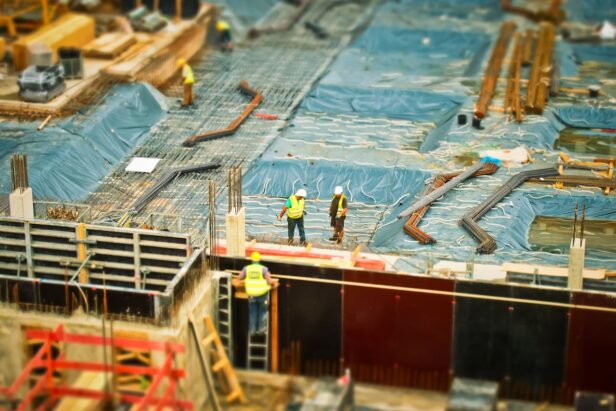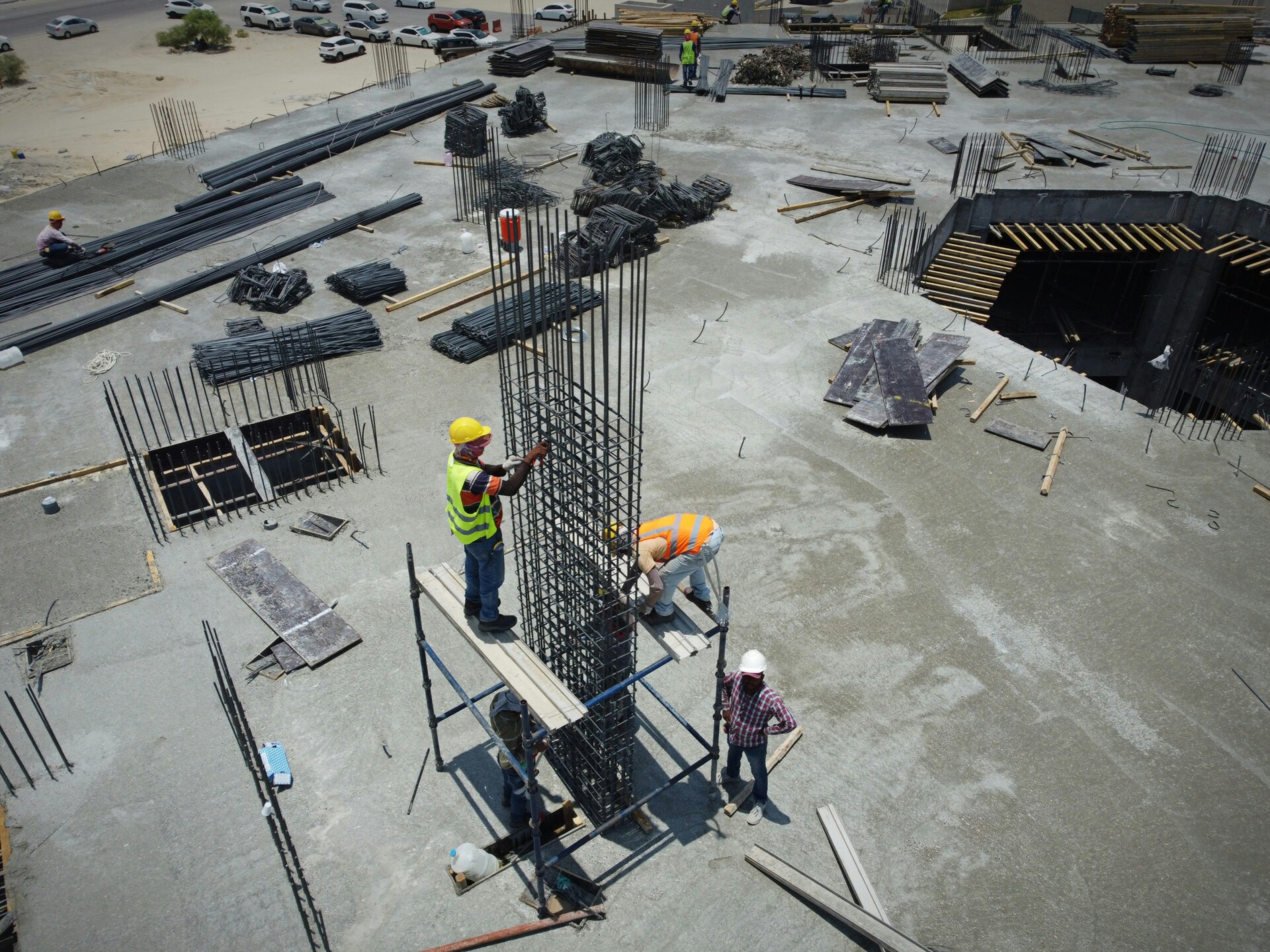Construction projects fail because owners skip early planning. We see delayed permits, unexpected soil conditions, and scope conflicts that could have been prevented. The difference between successful builds and problem jobs usually comes down to what happens before ground is broken.
Pre construction builders coordinate feasibility studies, design development, and permit processes while costs are still manageable. We help owners, architects, and engineers align on scope and budget before expensive changes become necessary. Early planning identifies risks and prevents the rework that derails schedules and budgets throughout the construction industry.
What Are The Main Stages Of A Project That Pre Construction Builders Align?

Construction projects flow through three distinct phases. Each requires different skills, resources, and coordination. We organize our approach around these stages to deliver projects on time and within budget.
Preconstruction Stage
During preconstruction, we create the strategic plan that guides everything downstream. This involves developing design concepts with architects and engineers while securing necessary permits and entitlements from local authorities. We organize labor crews, source materials, and coordinate equipment delivery schedules.
Our teams define project scope, establish cost parameters, and build realistic construction schedules. This groundwork allows field crews to execute work in control rather than react to problems. Strong preconstruction prevents the gaps in project communication that lead to costly delays.
Construction Phase
Physical building work begins when equipment mobilizes to the site. Foundation excavation, structural framing, mechanical systems, and finish work happen in sequence. This phase remains highly visible to owners and neighbors.
We coordinate subcontractor schedules, manage material deliveries, and monitor quality standards throughout construction. Daily progress meetings and weekly reports keep all stakeholders informed as the project takes shape.
Post-Construction Phase
Project completion requires systematic closeout activities beyond the final nail or paint stroke. We complete punch list items, clean the site, and demobilize equipment and temporary facilities. Documentation handover includes as-built drawings, warranties, and maintenance manuals.
Training the owner’s facilities team on building systems ensures smooth operations after we leave. This handover process protects our work and supports long-term building performance.
Pre construction builders focus heavily on the first stage because early decisions create process alignment and establish communication protocols. The milestones we set during preconstruction prevent coordination gaps that cause schedule delays and cost overruns in later phases.
Who Should Attend Preconstruction Meetings And What Must Be Covered?
We start preconstruction meetings with the owner and general contractor at the table. These early discussions set the project’s foundation and establish clear lines of authority. The owner brings project vision and budget parameters while we contribute construction expertise and feasibility assessment.
As planning progresses, we expand the team to include subcontractors and specialized support roles. The project manager coordinates daily operations and maintains schedule discipline. Our superintendent or site monitor provides field perspective on logistics and sequencing. The safety officer reviews site conditions and develops protocols that protect workers and comply with regulations.
Procurement managers help us plan material delivery and identify long-lead items that could impact the schedule. HR representatives address staffing requirements and onboarding procedures for large crews. Our project accountant tracks costs and payment schedules. The chief estimator validates quantities and pricing assumptions. Legal counsel reviews contract terms and ensures compliance with local regulations.
Essential Documents For Every Meeting
We maintain a clear agenda that keeps discussions focused and productive. Key documents include the construction contract, which defines roles and responsibilities for all parties. Design documents and blueprints show what we’re building and help identify potential conflicts early.
The project schedule outlines major milestones and critical path activities. Our site-specific safety plan addresses hazards unique to each location. Site plans show access routes, staging areas, and utility locations. Quality control plans establish inspection points and testing requirements.
Communication plans define reporting structures and decision-making authority. We distribute these documents before each meeting so stakeholders can review details and come prepared with questions. This preparation prevents confusion and keeps meetings efficient.
Regular meetings with the right people prevent costly rework and delays that drain project budgets. Even small projects benefit from this structured approach, as skipping preconstruction meetings often leads to change orders and schedule extensions that could have been avoided through early coordination.
What Steps Make Up An Effective Preconstruction Process?

An effective preconstruction process follows a logical sequence that builds from initial assessment through final coordination. Each step delivers specific information that enables the next phase to proceed smoothly. We organize these activities to create a foundation for successful construction execution.
The preconstruction process begins with fundamental project evaluation and progresses through detailed planning, regulatory compliance, and team coordination. These activities require careful sequencing to avoid rework and maintain project momentum.
Core Assessment And Planning Steps
Feasibility study tests financial, technical, and market viability before committing significant resources. We evaluate whether the project can achieve its objectives within budget and timeline constraints while meeting market demands.
Site evaluation and soil analysis reviews topography, access, conditions, and constraints that affect construction approach. This assessment reveals geotechnical conditions, drainage patterns, utility access, and environmental factors that influence design and cost.
Project definition and scope clarifies requirements, deliverables, and level of finishes with all stakeholders. We establish clear boundaries for what the project includes and excludes to prevent scope creep during construction.
Design development refines drawings and specifications while reviewing constructability and value engineering opportunities. This step ensures designs can be built efficiently and cost-effectively with available resources and methods.
Regulatory And Financial Planning
Permits and approvals engage authorities, submit plans, respond to reviews, and obtain all required permits. We coordinate with multiple agencies to secure building permits, environmental clearances, and utility connections before construction begins.
Estimating and budgeting includes quantity takeoff, labor and equipment costs, alternative pricing, and contingency planning. This comprehensive cost analysis establishes realistic project budgets and identifies potential cost-saving opportunities.
Material takeoff and procurement schedule plans long-lead items and delivery timing to prevent construction delays. We identify critical materials early and coordinate delivery schedules with construction sequencing requirements.
Team Assembly And Coordination
Bidding and contractor selection issues RFQs and RFPs, levels bids, and negotiates contracts with qualified subcontractors. This process ensures we select the right team members based on capability, capacity, and cost competitiveness.
Team assembly and communication plan defines roles, reporting structures, and information flow protocols. Clear communication channels prevent misunderstandings and keep all stakeholders aligned throughout the project.
Construction scheduling builds a work breakdown structure, maps dependencies, and plans sequence and durations for all activities. We identify the critical path and allocate resources to maintain schedule integrity.
Preconstruction meetings confirm scope, quality requirements, safety protocols, and logistics before mobilization. These final coordination sessions ensure everyone understands their responsibilities and project expectations before work begins on site.
How Do Pre Construction Builders Control Risk, Budget, And Schedule Before Breaking Ground?
We control project success through systematic management of risk, budget, and schedule during preconstruction. Each control system works together to prevent problems from emerging during construction when fixes become expensive and disruptive.
Risk Identification And Response Planning
We map all potential threats to project success across five critical categories. Safety risks include site hazards, equipment dangers, and worker protection needs. Cost risks involve material price fluctuations, labor availability, and unforeseen site conditions.
Design risks emerge from incomplete drawings, coordination gaps between trades, and constructability issues. Regulatory risks include permit delays, code compliance requirements, and inspection scheduling. Environmental risks cover weather impacts, contamination discovery, and neighbor relations.
Our response strategy follows a four-part framework. We avoid risks by changing design or methods when possible. We transfer risks through insurance or contract terms with specialized subcontractors. We mitigate risks by building buffers and backup plans. We accept risks when the cost of mitigation exceeds potential impact.
Cost Control Planning Systems
Cost forecasting starts with detailed quantity takeoffs and current market pricing. We track cost variance against the approved budget throughout preconstruction as design details emerge and subcontractor pricing arrives. Change management procedures require approval before any scope modifications that affect budget.
Variance analysis identifies trends before they become overruns. Material cost escalation triggers value engineering reviews to maintain budget targets. Labor rate changes prompt resource allocation adjustments. We maintain cost contingencies based on project complexity and risk exposure.
Regular cost reporting keeps stakeholders informed of budget status and projected final costs. We reconcile estimates against actual pricing from subcontractor bids to refine our forecasting accuracy.
Site-Specific Safety Planning
We develop safety plans that address the unique hazards of each project location and scope. Site-specific hazards include overhead utilities, underground services, adjacent traffic, and existing building conditions. Equipment safety planning covers crane operations, excavation requirements, and material handling procedures.
Emergency response procedures define evacuation routes, medical response protocols, and communication systems. We coordinate with local emergency services and establish on-site first aid capabilities. Safety training requirements are established for all trades working on the project.
Personal protective equipment standards are specified based on identified hazards. Site access controls prevent unauthorized entry and protect both workers and visitors. Regular safety inspections and toolbox talks maintain awareness throughout construction.
Quality Control Planning Framework
We establish quality targets that align with owner expectations and industry standards. Inspection schedules are coordinated with construction sequences to catch defects early when correction costs remain manageable. Testing requirements are defined for critical systems and materials.
Quality assurance procedures prevent rework by ensuring work meets standards before subsequent activities begin. We identify hold points where work cannot proceed without approved inspections. Material approval processes verify that products meet specification requirements before delivery.
Documentation standards capture quality verification activities for future reference and warranty purposes. Quality control reduces rework by catching problems early in the process.
Schedule Development And Risk Management
We build Work Breakdown Structures that organize complex projects into manageable components. The critical path identifies activities that directly impact project completion dates. Resource allocation ensures adequate crew sizes and equipment availability for scheduled work.
Schedule visualization through Gantt charts and network diagrams helps teams understand work sequences and dependencies. We assess schedule risks by analyzing weather impacts, permit timing, and resource availability constraints. Contingency time is added to critical activities based on risk assessment.
According to OSHA safety standards, proper preconstruction planning significantly reduces workplace incidents and delays. Schedule discipline prevents the rushed conditions that often lead to safety problems and quality issues.
Integrated Benefits Of Strong Preconstruction Controls
Systematic preconstruction controls deliver measurable project benefits. Time savings result from fewer delays and smoother workflow coordination. Cost savings emerge from better resource utilization and reduced rework requirements.
Communication improvements keep all stakeholders aligned on project goals and current status. Waste reduction occurs through better material planning and quality control. Environmental impact decreases through coordinated logistics and efficient resource use.
These control systems work together to establish the foundation for successful project execution. Early investment in planning and controls pays dividends throughout the construction process.
Conclusion And Next Steps

Pre construction builders shape every aspect of a project’s success through methodical preparation and control. We confirm feasibility before resources commit, assemble experienced teams that understand local conditions, and define scope with precision that prevents scope creep. Early alignment on cost and schedule creates the foundation for financial control and timeline discipline that carries through mobilization.
Our preconstruction checklist ensures consistent execution across every project phase. We secure permits early to prevent regulatory delays, plan procurement schedules that account for material lead times, and conduct preconstruction meetings with structured agendas that address scope, safety requirements, and logistics. We build risk-aware schedules with contingency plans and finalize both safety protocols and quality control measures before any equipment moves to site. This systematic approach transforms complex projects into manageable sequences of controlled activities.
Ready to mobilize your next project with confidence? Contact EB3 Construction to organize your preconstruction planning and ensure your build starts strong.




